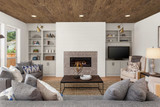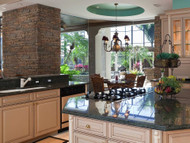
Faux wall panels beautifully mimic the look and texture of real stone and brick, but, in some cases, a little carpentry magic is required to get the perfect look. Installing wall panels around a corner can be tricky, especially when your home isn’t as crisp and proportionately angled as you’d like.
Whether your home has perfect 90-degree angles – or not – we’re sharing tips, tricks, and products you can use to help you create perfect wall paneling corners.
How to Panel Around a 90-Degree Corner
During wall panel installation, it's easy to get into a groove, well, until you hit a corner! Whether you have an inside or an outside corner, joining panels together at a corner can be tedious.
So, how do you join paneling in corners? In theory, a corner should be 90 degrees, and to connect two panels, they need to be “mitered.” Mitering involves cutting a 45-degree slice out of the edges, so when you fold them together the texture on the panel connects consistently at a right angle.
On our website, we cover extensively how to miter the edges of our faux wall paneling.
Depending on where you’re installing your panels, you may need to miter an inside corner or an outside corner. Be sure to follow the appropriate instructions.
In the photo to the right, the homeowner mitered an outside corner so the faux stone covering the fireplace has a more natural finish.
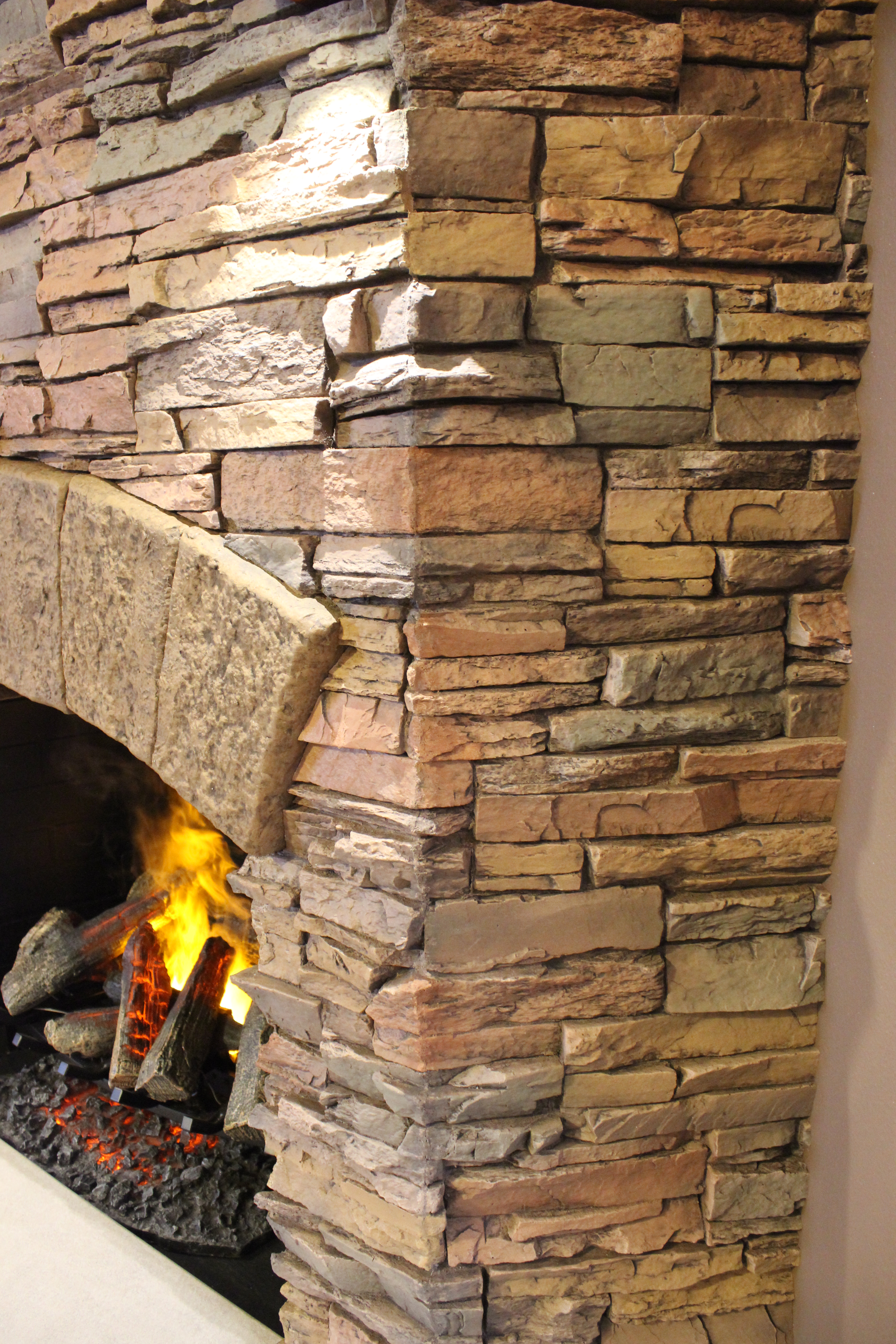
How to Panel Around an Awkward Corner
A miter saw can take the guesswork out of cutting, but standard mitering assumes the corners you're trying to connect are perfect right angles.
Corners in older homes, homes that are shifting, and homes that were built poorly in the first place won’t be perfect. You’ll likely have some corners that are off a couple of degrees.
As a result, standard mitering won’t give you a good fit or it will leave an ugly gap between the two panels. If this is a problem you’re facing, there are solutions.
Caulk the Gap Between Your Panels

 Kentucky Dry Stack Faux Stone Wall Panels in Mist
Kentucky Dry Stack Faux Stone Wall Panels in MistIf the corner is less than 90 degrees, there might be a small gap between the panels. You can fill that gap with colored caulk.
We sell textured caulk as one of our accessories, to cover up screws and damage to the panels. If the gap between your panels is very small, this is a quick and easy solution to use.
Use the Coping Technique for Inside Corners
 Anson Fieldstone Faux Stone Wall Panels in Blended Quarry installed on an inside corner
Anson Fieldstone Faux Stone Wall Panels in Blended Quarry installed on an inside corner Hampton Cobblestone Faux Stone Wall Panels in Summer Tan installed on an inside corner
Hampton Cobblestone Faux Stone Wall Panels in Summer Tan installed on an inside cornerIf caulking is not an option, you might have to do something called “coping”. Coped joints accommodate imperfect wall corners better than mitered joints, and are a technique used for inside corners, not outside corners.
Coping involves first cutting one of the panels you want to attach with a regular miter saw, at a 45-degree angle.
Then you attach that to the wall, flush with the edge. Next, you cut the same 45-degree angle into the other panel - but don't attach it yet (not that it would fit flush, anyway).
Next, take a narrow-bladed coping saw and start “coping” at the edge of the panel you just cut. This involves cutting a reverse 45-degree slice out of the panel – almost like hollowing it out inside. Once you're done, the hollowed-out edge should fit flush with the original.
It's not the easiest carpentry trick to master, and this is why mitering is a more popular option. But, for a more finished look, coping is a technique to consider.
Install Prefinished Corner Pieces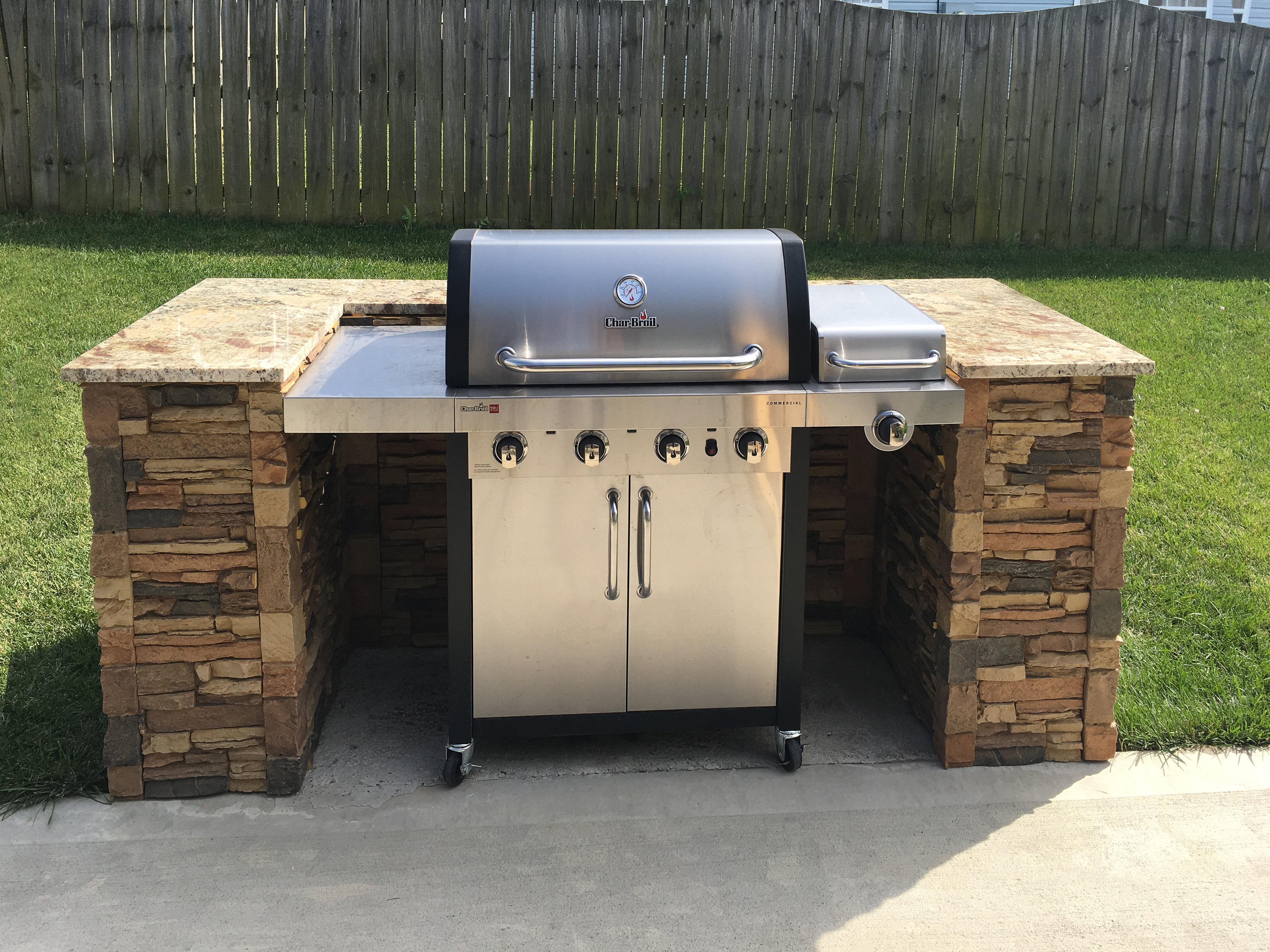
Pre-finished corner pieces add the finishing touch to any faux brick, stone, or wood panel wall, and are a great option for walls with awkward inside or outside corners.
We offer two main styles of pre-finished corners: Interlocking and universal flush corners.
Interlocking corner pieces are style-specific, and beautifully integrate with the panels to create the illusion of real stone or brick cascading around a corner.
Universal flush corners work with many, but not all, faux panel styles. This style doesn’t integrate with the panels but sticks out a little further than they do, almost like a frame.
Corner pieces are easy to install, and have a refined, polished look every time.
Install Interlocking Endcaps

 Colorado Dry Stack Faux Stone Wall Panels in Iced Coffee
Colorado Dry Stack Faux Stone Wall Panels in Iced CoffeeInterlocking endcaps eliminate the need to miter a clean edge, saving you a lot of time and effort.
Installing endcaps is one of the preferred ways to terminate a panel run when there’s a transition to a different wall material, like drywall. For example, use interlocking endcaps where your focal wall meets the drywall on the same plane.
When installed with your faux stone or brick wall panels, endcaps create flawless edges that appear as though they were installed by a professional.
Just like our faux wall panels, endcaps are made of high-density polyurethane, making them resistant to fading, cracking, damage from pests, weather, and deterioration. Taking care of faux panels and endcaps requires little to no effort, as they are virtually maintenance-free.
Creating Perfect Corners With Faux Panels vs. Natural Materials
Next time you're in a fancy hotel or restaurant and see stacked stone or brick, check the corners. If they've invested in the real thing, it's common for contractors to literally “cut corners” or aimlessly join the two edges together. This creates an ugly joint that reveals how the “real” stone or brick is just a veneer.
Going faux isn't just a money saver, it can also look better than the real thing!
Another consideration is that none of these techniques would be an option if you were trying to install real stone or brick.
To the eye, our faux panels are indistinguishable. But, they're made from high-density polyurethane foam, a material that’s easily cut and shaped with a regular wood saw. Working with faux panels is much easier than cutting stone or brick, which is something that's beyond the scope of most small-scale installers.
Make Paneling Corners Easy With Faux Wall Panels
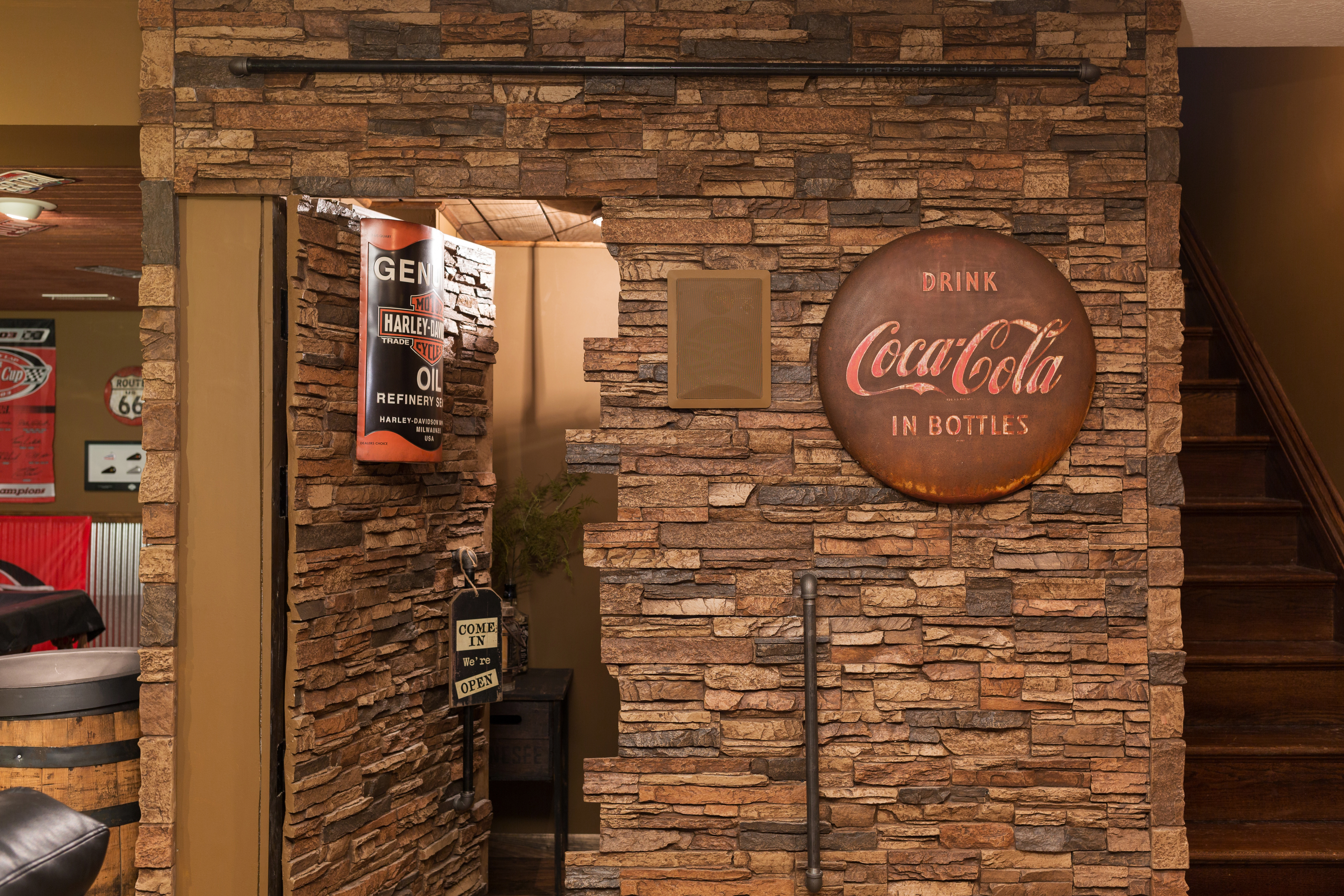 Colorado Dry Stack Faus Stone Panels in Sierra Brown with universal outside corners also in Sierra Brown
Colorado Dry Stack Faus Stone Panels in Sierra Brown with universal outside corners also in Sierra Brown
Whether your home has crisp 90-degree angles, or your angles are a little off, you can install paneling with perfect corners using one of these techniques.
Now that we’ve shown you how to do corners with paneling, it's time to start your home transformation. The first step is to choose your favorite faux panel.
Faux wall panels are available in a wide variety of stunning styles and authentic colors. No matter which panel style you choose, you now have the tools to navigate tricky corners with ease!
Shop Related Products